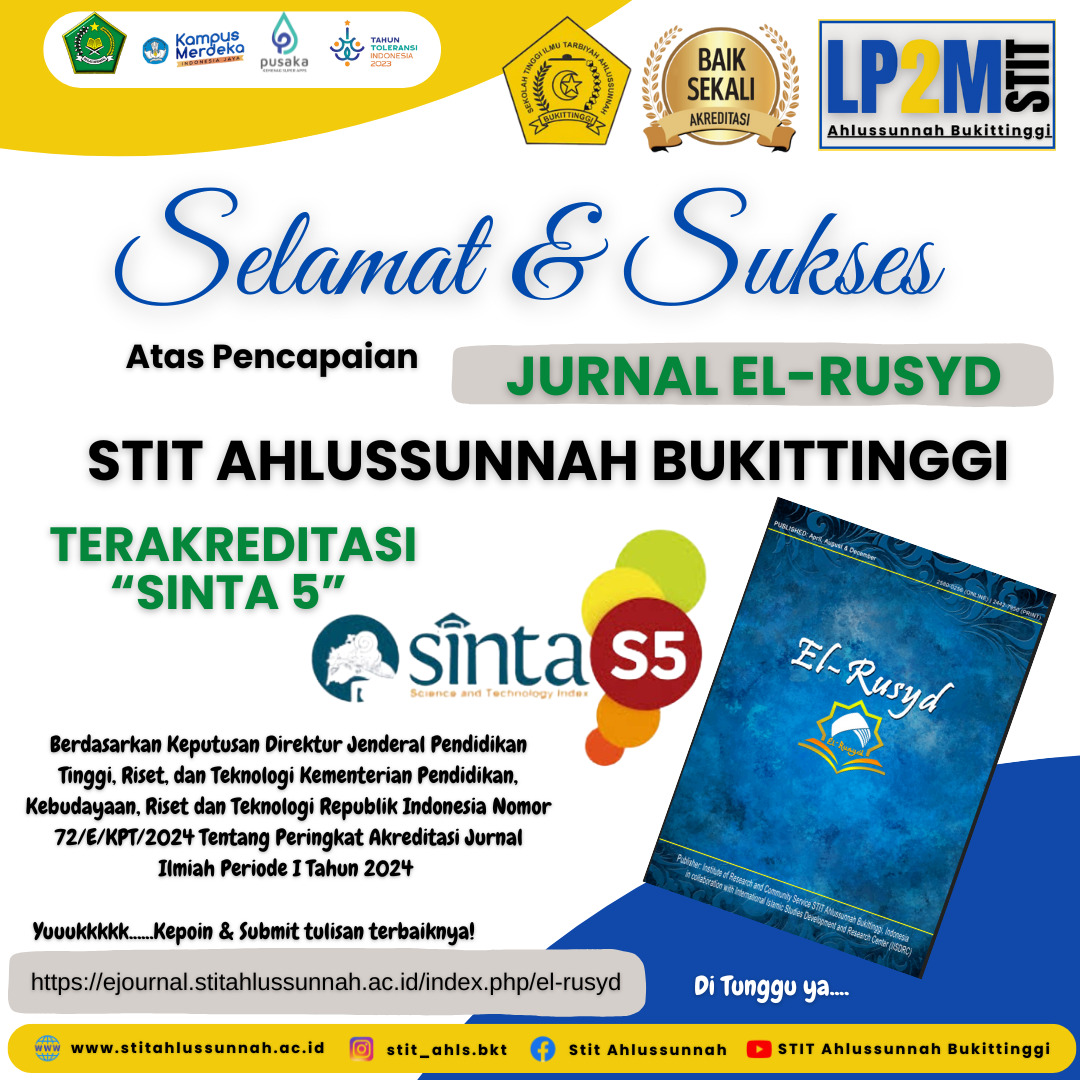MASJID PELOPOR PENDIDIKAN ISLAM BERBASIS WIRAUSAHA (PISBERWI) : BIDANG USAHA YANG DIMINATI REMAJA PUTUS SEKOLAH DI KOTA BUKITTINGGI
DOI:
https://doi.org/10.58485/elrusyd.v8i1.146Keywords:
Pendidikan Agama Islam, Mesjid, Anak Putus SekolahAbstract
This research aims to determine the business fields that are of interest to school-age children who drop out of school in the city of Bukittinggi. The type of research is field research using qualitative methods using a descriptive approach. In this study the author presents the results of the research by conveying the conditions that exist in the field as they are. The research that the author did by looking for and finding school dropouts in three districts. The author obtained data for school dropouts from the Bukittinggi City Education Office for 2021. The data sources in this study were school-age dropouts, parents, administrators of the Jamik Tarok mosque, the Jamik Tigo Baleh Mosque, the Jamik Mandiangin Mosque and the Grand Mosque. Regarding data collection techniques, namely observation, interviews, documentation and questionnaires. For data analysis techniques, the authors carried out three stages, namely data reduction, data display and drawing conclusions with data verification. From the research that the author has done, the results obtained regarding the business fields that are of interest to school dropouts in the city of Bukittinggi, namely the business fields that are of interest to school dropouts in the city of Bukittinggi consist of six types of businesses. The business fields are catering, make-up, fashion, workshop, music and accessories.
References
Elizabeth B.Hurlock, (t.th), Perkembangan Anak,terjemahan, Jakarta : Erlangga
Syaikh Shafiyyurrahman al Mubarakfuri, (2012), Sirah Nabawiyah, terjemahan, Jakarta Timur : Pustaka al Kautsar
Musriadi dan Andi Rezal Juhari, Revitalisasi Peran Pengurus Masjid Dalam Upaya Pemberdayaan Umat Berbasis Kearifan Lokal Sebagai Model Dakwah Ekonomi Kreatif Dalam Perspektif Al-Qur’an, Al Karima : Jurnal Studi Ilmu al Qur’an dan Tafsir 6 (2), 1-9, 2022.











